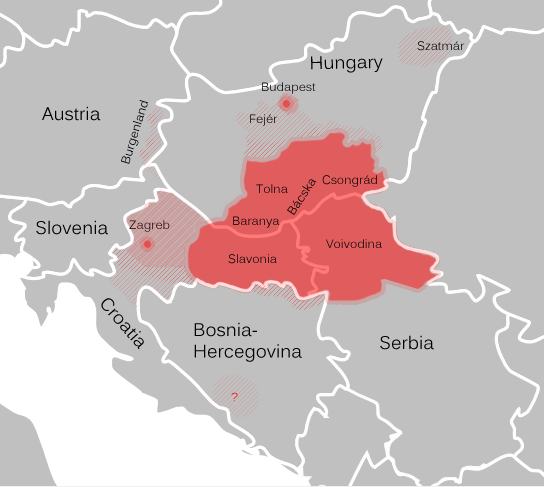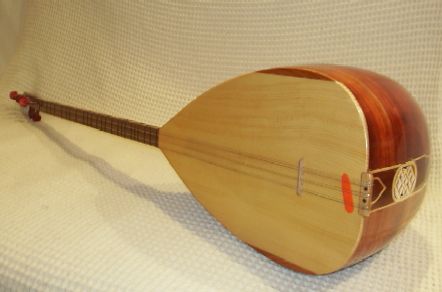|
Tambur
The ''tambur'' (spelled in keeping with TDK conventions) is a fretted string instrument of Turkey and the former lands of the Ottoman Empire. Like the ney, the armudi (lit. pear-shaped) kemençe and the kudüm, it constitutes one of the four instruments of the basic quartet of Turkish classical music. Of the two variants, one is played with a plectrum (''mızraplı tambur'') and the other with a bow ('' yaylı tambur''). The player is called a ''tamburî''.Tambur Republic of Turkey - Ministry of Culture and Tourism History and development There are several hypotheses as to the origin of the instrument. One suggests that it descended from the kopuz, a string instrument still in use among the Turkic peoples of Central Asia and the Caspian region. T ...[...More Info...] [...Related Items...] OR: [Wikipedia] [Google] [Baidu] |
Tamburica
Tamburica ( or ) or tamboura ( sh-Latn-Cyrl, separator=" / ", tamburica, тамбурица, little tamboura; hu, tambura; el, Ταμπουράς, Tampourás; sometimes written tamburrizza or tamburitza), refers to a family of long-necked lutes popular in Southern Europe and Central Europe, especially Serbia (in Vojvodina, Mačva and Posavo-Tamnava), Bosnia and Herzegovina, Croatia (of which it is the national string instrument), Slovenia, and Hungary ( predominantly amongst its ethnic South Slavic minority groups). It is also known in Burgenland, Austria. All took their name and some characteristics from the Persian tanbur but also resemble the mandolin and guitar in the sense that its strings are plucked and often paired. The frets may be moveable to allow the playing of various modes. The variety of tamburica shapes known today were developed in Serbia and Croatia by a number of indigenous contributors near the end of the 19th century. History There is little reliable data ... [...More Info...] [...Related Items...] OR: [Wikipedia] [Google] [Baidu] |
Tanbur
The term ''Tanbur'' ( fa, تنبور, ) can refer to various long-necked string instruments originating in Mesopotamia, Southern or Central Asia. According to the '' New Grove Dictionary of Music and Musicians'', "terminology presents a complicated situation. Nowadays the term tanbur (or tambur) is applied to a variety of distinct and related long-necked lutes used in art and folk traditions. Similar or identical instruments are also known by other terms." These instruments are used in the traditional music of Iran, India, Kurdistan, Armenia, Afghanistan, Azerbaijan (especially Avar community), Pakistan, Turkey, Tajikistan, Kazakhstan, and Uzbekistan. Origins Tanburs have been present in Mesopotamia since the Akkadian era, or the third millennium BC. Three figurines have been found in Susa that belong to 1500 BC, and in hands of one of them is a tanbur-like instrument. Also an image on the rocks near Mosul that belong to about 1000 B shows tanbur players. Playing the ... [...More Info...] [...Related Items...] OR: [Wikipedia] [Google] [Baidu] |
Cemil Bey
Tanburi Cemil Bey (1873, Istanbul – July 28, 1916, Istanbul) was an Ottoman tanbur, Turkish tambur, yaylı tambur, kemençe, and lavta virtuoso and composer, who has greatly contributed to the ''taksim'' (improvisation on a makam/maqam) genre in Ottoman classical music. His son, Mesut Cemil Bey, was an equally renowned Turkish tambur virtuoso. Biography Cemil Bey was born in Istanbul, Ottoman Empire, in 1871 or 1873; his birth date is uncertain. He took his first lessons in music from Kanuni Ahmet Bey and the violin player Kemani Aleksan, his first instruments thus being the violin and the kanun. After completing middle school, he continued in a school for civil servants (''Mülkiye''), but then devoted himself to music and abandoned his education. He began to play the tanbur quite early in his youth and by the age of 20, his renown had already spread among the tamburis of Istanbul. Reforming the traditional playing technique of the tambur, he developed an energetic tec ... [...More Info...] [...Related Items...] OR: [Wikipedia] [Google] [Baidu] |
Tambouras
The tambouras ( el, ταμπουράς ) is a Greek traditional string instrument of Byzantine origin. It has existed since at least the 10th century, when it was known in Assyria and Egypt. At that time, it might have between two and six strings, but Arabs adopted it, and called it a Tanbur. The characteristic long neck bears two strings, tuned five notes apart. It also similar to the Turkish ''tambur'' and each of them have same origin. Tanbur, a Persian word, according to some scholars taken from Sumerian ‘Pan Tur, meaning “Little bow”. History Origins It is considered that the ''tambouras ancestor is the ancient Greek ''pandouris'', also known as '' pandoura'', ''pandouros'' or ''pandourida'' (πανδουρίς, πανδούρα, πάνδουρος), from which the word is derived. The ''tambouras'' is mentioned in the Byzantine epic of Digenis Akritas, when the hero plays his θαμπούριν, ''thambourin'' (medieval form of ''tambouras''): Name The name re ... [...More Info...] [...Related Items...] OR: [Wikipedia] [Google] [Baidu] |
String Instrument
String instruments, stringed instruments, or chordophones are musical instruments that produce sound from vibrating strings when a performer plays or sounds the strings in some manner. Musicians play some string instruments by plucking the strings with their fingers or a plectrum—and others by hitting the strings with a light wooden hammer or by rubbing the strings with a bow. In some keyboard instruments, such as the harpsichord, the musician presses a key that plucks the string. Other musical instruments generate sound by striking the string. With bowed instruments, the player pulls a rosined horsehair bow across the strings, causing them to vibrate. With a hurdy-gurdy, the musician cranks a wheel whose rosined edge touches the strings. Bowed instruments include the string section instruments of the orchestra in Western classical music ( violin, viola, cello and double bass) and a number of other instruments (e.g., viols and gambas used in early music from the ... [...More Info...] [...Related Items...] OR: [Wikipedia] [Google] [Baidu] |
Bağlama
The ''bağlama'' or ''saz'' is a family of plucked string instruments, long-necked lutes used in Ottoman classical music, Turkish folk music, Turkish Arabesque music, Azerbaijani music, Kurdish music, Armenian music and in parts of Syria, Iraq and the Balkan countries. ''Bağlama'' ( tr, bağlama) is Turkish from ''bağlamak'', "to tie". It is . ''Saz'' ( fa, ساز) means "to make; to compose" in Persian. It is . According to '' The New Grove Dictionary of Music and Musicians'', "the terms 'bağlama' and 'saz' are used somewhat interchangeably in Turkey." Like the Western lute and the Middle-Eastern oud, it has a deep round back, but a much longer neck. It can be played with a plectrum or with a fingerpicking style known as ''şelpe''. In the music of Greece the name '' baglamas'' ( el, μπαγλαμάς) is given to a treble bouzouki, a related instrument. The Turkish settlement of Anatolia from the late eleventh century onward saw the introduction of a two-strin ... [...More Info...] [...Related Items...] OR: [Wikipedia] [Google] [Baidu] |
Ottoman Classical Music
Ottoman music ( tr, Osmanlı müziği) or Turkish classical music ( tr, Türk sanat müziği) is the tradition of classical music originating in the Ottoman Empire. Developed in the palace, major Ottoman cities, and Sufi lodges, it traditionally features a solo singer with a small to medium-sized instrumental ensemble. A tradition of music that reached its golden age around the early 18th century, Ottoman music traces its roots back to the music of the Hellenic and Persianate world, a distinctive feature of which is the usage of a modal melodic system. This system, alternatively called '' makam'', '' dastgah'' or '' echos'', are a large and varied system of melodic material, defining both scales and melodic contour. In Ottoman music alone, more than 600 makams have been used so far, and out of these, at least 120 makams are in common use and formally defined. Rhythmically, Ottoman music uses the ''zaman'' and ''usûl'' systems, which determine time signatures and accents r ... [...More Info...] [...Related Items...] OR: [Wikipedia] [Google] [Baidu] |
Cümbüş
The ''cümbüş'' (; ) is a Turkish stringed instrument of relatively modern origin. It was developed in 1930 by Zeynel Abidin Cümbüş (1881–1947) as an oud-like instrument that could be heard as part of a larger ensemble. The cümbüş is shaped like an American banjo, with a spun-aluminum resonator bowl and skin soundboard. Although originally configured as an oud, the instrument has been converted to other instruments by attaching a different set of neck and strings. The standard cümbüş is fretless, but guitar, mandolin and ukulele versions have fretboards. The neck is adjustable, allowing the musician to change the angle of the neck to its strings by turning a screw. One model is made with a wooden resonator bowl, with the effect of a less tinny, softer sound.Zeynel Abidin Cümbüş manufacturers, ''Cumb ... [...More Info...] [...Related Items...] OR: [Wikipedia] [Google] [Baidu] |
Tanburi Büyük Osman Bey
Tanburi Büyük Osman Bey or Tamburi Büyük Osman Bey (1816–1885) was an Ottoman composer and Turkish tambur player. He is considered one of the most outstanding peşrev compositors in Ottoman classical music. Life Tanburi Büyük Osman Bey was born in 1816 in the Tophane district of Istanbul. Most of the information we have on him originates from an oral tradition amongst his pupils and the pupils of those who knew him. His father, Zeki Mehmed Ağa as well as his grandfather Tanburi Numan Ağa were musicians of renown. At the age of eight, he was accepted to the Imperial School of Enderun, where he began his education among the foregoing masters of Turkish classical music, from whom he acquired a firm theoretical basis. His acquaintance with the tanbur also dates back to those years. As his father Zeki Mehmed Ağa is said to have refused to pass on to his son his knowledge of the tambur, most of the work must have come to be incumbent on Osman Bey himself. He is also sai ... [...More Info...] [...Related Items...] OR: [Wikipedia] [Google] [Baidu] |
Tamburi Ali Efendi
Tamburi Ali Efendi (also spelled ''Tanburi'' or ''Tambouri''), (1836–1902) was a Turkish tambur virtuoso and composer, one of the most famous among 19th-century composers, who was also notable for having greatly contributed to Tamburi Cemil Bey's development in music. Ali Efendi was born in Midilli (now Mytilene) in 1836. His education, both in Mytilene and, after 1854, in İstanbul, was religious. He was soon remarked thanks to the beauty of his voice and his virtuosity in playing the tanbur and, upon the sultan Abdülaziz's personal instructions, was taken in employment in the palace, where he spent 23 years of his career. It was during this period that he met Tanburi Cemil Bey Tanburi Cemil Bey (1873, Istanbul – July 28, 1916, Istanbul) was an Ottoman tanbur, Turkish tambur, yaylı tambur, kemençe, and lavta virtuoso and composer, who has greatly contributed to the ''taksim'' (improvisation on a makam/maqam) ..., then an adolescent, and became his tanbur ... [...More Info...] [...Related Items...] OR: [Wikipedia] [Google] [Baidu] |





